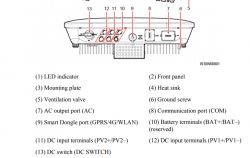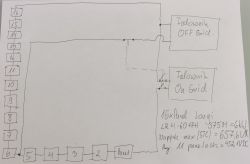McTommy wrote: I do not look at summer overproduction because I am thinking of a typical island in a building not connected to the network. Such an academic example.
It is not possible to make an island everywhere. In the area of Poland, where there is no sun for 2-3 months a year, building an island is pointless. Economically poorly justified. Too high costs have to be incurred to provide 100% solar energy in off-grid. Similarly, in Northern Finland, where it is dark for six months, no one will come up with the idea of building an island with PV only.
The operation of the warehouse in the on grid also benefits. You are not fully independent, but during these 80% of the days of the year, you can charge and use the energy with the battery in the evenings and at night every 24 hours.
Expanding the system for these 20% days of the year will consume too much funds to pay for itself, unless someone has access to the equipment for free. But it also makes no sense because it will be more profitable to sell this excess equipment and invest in something other than to keep off-grid at all costs.
Even if there is no production from panels, you can still charge the battery at a cheap rate and use energy from the warehouse at an expensive one. You know, the differences are not big, but we still maximize the benefit of having a warehouse, even as the forecast says there will be no sun.
For a prosumer with a warehouse in ZE and for those who have a lot of space for panels, magazines do not make sense.
The situation is different as we do not have space for 10, 20, 30kWP and there is no more warehouse in ZE.
- We consume an average of 8kWh per day.
- we invest in a 10kWh warehouse.
- we assume PV 5kWp,
- we drive from PV for 70% of the days of the year, charging it during the day and consuming it after sunset.
- for 30% of days a year, we charge in the 2nd tariff, use the expensive one (you only have to predict the day before that there will be no sun during the day and charge the warehouse cheaper)
Of course, this does not ensure that we will not draw any power from the grid at any point during the day. by loading the phases with equipment consuming temporarily more than the PV + battery provides, we will always take energy from the EV.





